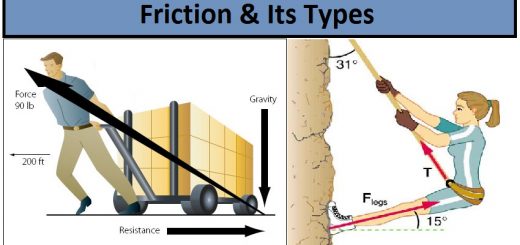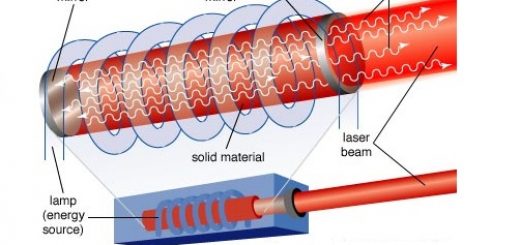Transistors types, structure (pnp transistor and npn transistor)
The transistor is a crystal of n-type confined between two crystals of p-type or a crystal of p-type confined between two crystals of n-type, There are two types of connection for a transistor in the electric circuit which are the common emitter between the collector and the base.
Transistor structure
It consists of three adjacent regions of doped semiconductor material, the first region is called emitter (E), the last one is called collector (C) while the middle region is called the base (B).
- The emitter is a semiconductor crystal of medium size with a high percentage of impurities.
- The base is a semiconductor crystal of very small width with a low percentage of impurities.
- The collector is a semiconductor crystal of relatively large size with less percentage of impurities than the emitter.
Types of transistors
There are two main types of bipolar junction transistor:
- pnp transistor consists of a base of n-type (n) while the emitter and the collector from p-type (p).
- npn transistor consists of a base of p-type (p) while the emitter and the collector of n-type (n).
Connecting the transistor in common base circuit (npn)
The emitter (E) is connected with the base (B) forward connection and the collector (C) is connected with the base (B) reverse connection, The electrons are emitted from the emitter (n) to the base (p) where they wander around in the base until picked up by collector (n).
During spreading of the electrons inside the base (p), part of them is consumed in filling the holes to recombine together, so that the collector current (IC) is always less than the emitter current (IE) where:
IE = IC + IB
Transistor coefficients:
The ratio between the collector current to the emitter current is called the current division (αe):
αe = IC / IE
The value of αe becomes near to I, because the width of the base is very small, has a large amount of impurities and only very small ratio from the current is consumed to fill the holes in the base and the electrons continue its motion to reach the collector, Current division (αe) is the ratio of the collector current to the emitter current at constant potential difference between the base and the collector.
When the current division in transistor = 0.98, It means that the ratio between the collector current (IC) to the emitter current (IE) at constant potential difference between the base and the collector (VCB) = 98 / 100
The transistor is used when connected in common base circuit to magnify the electric power and it can not be used to magnify the electric current because the collector current is less than the emitter current.
Connecting the transistor in the common emitter circuit (npn)
The emitter (E) is connecting with base (B) in forward connection, The emitter (E) is connecting with the collector (C) such that the emitter is connecting with the negative pole and the collector with the positive pole.
The electrons of the emitter (n) repel with the negative poles of the two batteries thus the electrons currents collect at the emitter and move towards the collector, If a small electric signal was added to the base current, its effect appears magnified in the collector current.
Transistor coefficients:
The ratio between the collector current to the base current is called the current gain (βe).
The current gain (βe) is the ratio between the collector current to the base current at a constant potential difference between the emitter and the collector.
βe = IC / IB
When the current gain of the transistor = 46, It means that the ratio of the collector current (IC) to the base current (IB) at the constant potential difference between the emitter and the collector (VCE) = 46.
Calculating the current gain (βe) in terms of the current division (αe)
αe = IC / IE , ∴ IC = αe IE
βe = IC / IB , IB = IE − IC
∴ IB = IE − αe IE
∴ βe = IC / IB = αe IE / ( IE − αe IE )
∴ βe = αe IE / IE ( 1 − αe )
∴ βe = αe / ( 1 − αe )
Transistor uses
As an amplifier: The transistor idea as an amplifier in the common emitter circuit is that when a very small electric signal has been added in the small base current so, its effect appears magnified in the collector current and this is called the action of the transistor.
As a switch: Transistor is connected in the electric circuit such that the emitter is common so,
VCC = VCE + IC RC
(Where: VCC is the battery voltage, VCE is the potential difference between the collector and the emitter, IC is the collector current, RC is the circuit resistance), Considering that the base is input and the collector is output.
Transistor in case of switch on (closed switch): When connecting the base (B) with positive voltage or large (Vin), a large current (IC) passes through the collector circuit thus the value (IC RC) becomes large and the value (VCE) decreases which means that the output is small, Which means that the transistor allows the flow of the base current because (Vin > Vout) and acts as a closed switch.
Transistor in case of switch off (opened switch): When connecting the base (B) with negative voltage or small (Vin), IC value decreases, IC RC value decreases, so VCE value increases which means that the output is large, Which means that, the transistor does not allow flow of the base current because (Vout > Vin) and acts as an opened switch.
The transistor acts in a reverse way such that when the input voltage (Vin) of the transistor is large, the output voltage (Vout) is small and vice versa, The polarity of the transistor can be identified using the ohmmeter.
Types of electronic components, pn junction connection & uses
Analog & digital electronics, logic gates, conversion of decimal numbers and binary numbers



